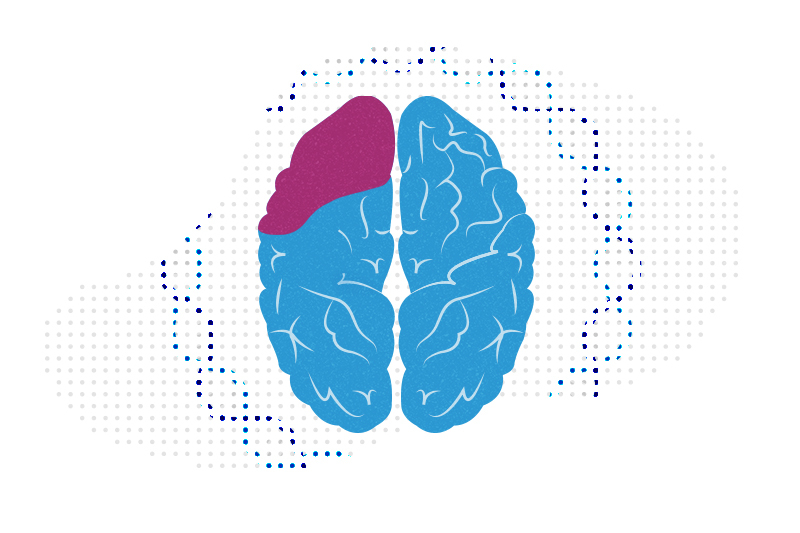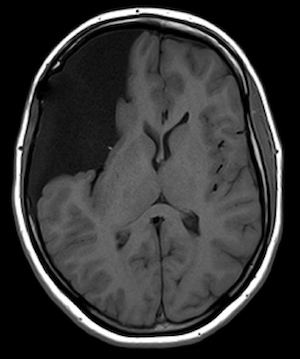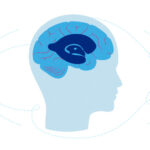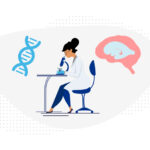Rethinking cerebral arachnoid cysts through genomics

Cerebral arachnoid cysts are the most common mass-occupying brain lesion in humans. Some cause no noticeable symptoms and may just be incidental findings. Others are quite severe, causing hydrocephalus and potentially nerve damage; these clearly require surgery to drain the cyst fluid and relieve pressure on the brain.
But a middle ground sits between these two extremes: cysts that are accompanied by developmental delay, neurobehavioral symptoms, or psychiatric symptoms like depression or bipolar illness that aren’t clearly caused by the cyst. Historically, surgical outcomes in such patients have been quite variable. Surgery may relieve the acute symptoms, but chronic symptoms like developmental delay remain.
A recent study investigated the underlying genetics of arachnoid cysts, with some surprising insights that could help guide clinical decision making. The work was led by Kristopher Kahle, MD, PhD, a researcher in Neurosurgery and Genetics and Genomics at Boston Children’s Hospital who is also chief of Pediatric Neurosurgery at Massachusetts General Hospital.
Cerebral arachnoid cysts: Clinical features, genetics, and brain development
Using an array of molecular datasets and computational techniques, Kahle and his colleagues exhaustively correlated the clinical features of arachnoid cysts with genomic information from 617 patients and their parents. Their work included analyzing whole-exome sequencing data and capturing patients’ clinical information from medical records, using natural language processing algorithms. The team also analyzed single-cell RNA sequencing data from human brain samples and mouse meninges at different anatomical locations and at different time points in development.

As they report in Nature Medicine, the team identified seven genes with variants likely to be causative of arachnoid cysts. All the genetic changes were de novo, occurring after conception. The affected genes are all involved in prenatal brain and meningeal development. All are part of networks that regulate gene expression, influencing when other genes turn on and off.
“Many of the genes we found have been linked to neurodevelopmental conditions like autism and epilepsy,” notes Kedous Mekbib, a Yale medical student working in Kahle’s lab and a co-first author on the paper. “This suggests that some patients have symptoms not because of the cyst putting pressure on the brain, but because of a deeper, genetically-mediated defect in brain development.”
Guidance on cerebral arachnoid cysts
The study’s findings suggest a possible new approach to patients with arachnoid cysts. Some patients might benefit from genetic testing to see if the cyst is a harbinger of a deeper neurodevelopmental disorder that may have been overlooked and that may persist after the cyst itself resolves. Such patients may warrant early speech, neurobehavioral, and physical therapy interventions.
“My lab’s goal is to translate genomic findings into pathophysiological insights that enable us to take better care of our pediatric neurosurgical patients and their families,” says Kahle. “These data should help us provide greater precision in prognostication and treatment stratification for patients with cerebral arachnoid cysts.”
Refer a patient to the Department of Neurosurgery at Boston Children’s.
Related Posts :
-

Beyond fluid buildup: Rethinking congenital hydrocephalus
Hydrocephalus is classically seen as a plumbing problem, the result of too much cerebrospinal fluid (CSF) in the brain or ...
-

Could gene therapy relieve post-hemorrhagic hydrocephalus?
Premature infants, especially very low birthweight babies, are at risk for intraventricular hemorrhage. A frequent complication of these brain bleeds ...
-

Like father, like daughter: Finding care for cavernous malformations
After Charlotte Miller underwent neurosurgery, her parents, Daniel and Eliza were a little nervous to tell her that part of ...
-

New research shows caregiver instability affects development
According to some estimates, more than 100 million children around the world experience separations from their caregiver every year. Previous research — ...





